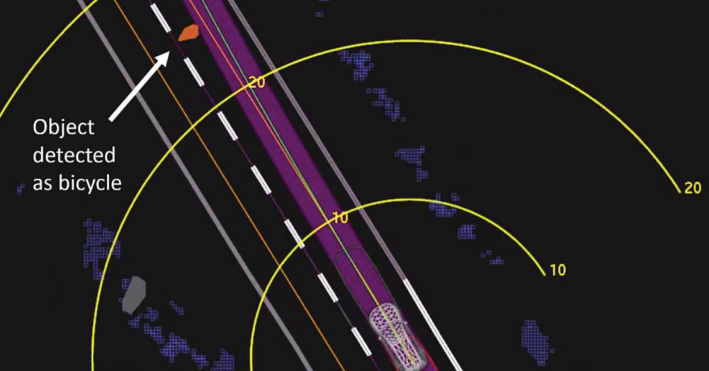Wider inequality. More sprawl. Worse transit. Those are some of the outcomes we could see from self-driving cars in cities, according to a Pittsburgh-based transit advocacy group.
In its new report, Pittsburghers for Public Transit argues that public concerns about equity, the environment and job security aren't playing a larger role in the conversation about autonomous vehicle deployment.
"The introduction of AV is presented as a panacea to our transportation, environmental and economic woes," the report says, as it cautions about all that can go wrong for the public, especially lower-income people.
Pittsburgh has been a key testing ground for the technology. With the support of Mayor Bill Peduto, Steel City is currently allowing five companies to test driverless vehicles on public roads. The public has been exposed to risks associated with being guinea pigs in an AV lab, yet not a single public meeting has been held to address public concerns, says PPT.
"The hype from the industry is really dominating the discussion," said Laura Weins, director of the group. "We have literally no regulatory framework on this. They just do whatever they want and use our public right of ways."
Pittsburgh does ask the companies to abide by a voluntary agree, but there is no enforcement mechanism. (This is very similar to the way federal regulators are handling the issue.)
Their report questions some of the public benefits of AVs. Here's a few of the possibilities they are raising in the meantime:
Less transit and more sprawl
Proponents of self-driving cars have argued that they could expand access by reducing operating costs (by eliminating drivers), and the savings could be used to expand service to currently underserved areas. But there are good reasons to be skeptical, says the report.
"The lack of transit in underserved communities often results primarily from a lack of political will to prioritize mobility solutions for underserved areas," not from lack of money, says PPT.
In addition, experiments with small vehicles providing door-to-door service — "micro-transit" — have been disappointing in the U.S. "These pilot projects saw unsustainably high costs per rider and low ridership (less than four boardings an hour)."
Self-driving cars could help produce an environment that is hostile to transit overall.
"Unregulated AV adoption potentially worsens urban sprawl and increases consumer appetite for personal transportation," PPT writes.
Because this technology lowers the real costs of driving by freeing passengers for other activities, researchers have predicted it will increase driving miles and promote commuting to distant locations in sprawling or rural.
The group also says AVs "create the possibility of new forms of social segregation."
Self-driving cars will be expensive, at least for a while. And those who can't afford them "will experience a decrease rather than an increase in transportation options, fragmenting communities based on their ability to purchase AV."
Bike and pedestrian safety risks

Finally, AV testing presents risks to pedestrians and cyclists because automated driving tech still isn't perfect. We saw the worst of it when a pedestrian was killed in Tempe, Arizona by a self-driving Uber car last year.
In addition, pedestrians and cyclists risk losing funding for essential infrastructure like sidewalks and crosswalks to special street treatments for AVs. The city of Pittsburgh, for example, allocated $23 million from its "Department of Mobility and Infrastructure" for testing and deployment of an "autonomous micro transit shuttle," which Weins, the PPT director, called "not really mass transit."
"In these same communities, residents have called for better sidewalks, crosswalks, dedicated bus and bike infrastructure and expanded transit service to encourage safe and accessible transportation," the group says.
Although AVs have been sold as a potential big safety improvement, there's much more the city could be doing right now to reduce traffic fatalities, PPT says.
"Lower speed limits in cities, sidewalk bump-outs to shorten pedestrian crossing distances, and protected bike and bus infrastructure all exist as proven solutions for enhancing human safety," they write. "Simply prioritizing buses over private vehicles as the form of mobility promoted by our infrastructure is an effective strategy to reduce the number of accidents on our roads."
Green raw deal
The environmental benefits of AVs rest entirely on whether they are electrified. But almost all the credible research predicts they will increase driving miles without some regulation.
"AVs may introduce empty vehicle travel, which further increases vehicle miles traveled," the report says. In other words, what's worse for the environment than solo-occupancy cars? Zero occupancy cars.
"Creating a more resilient world requires a radical shift in our transportation practices away from reliance on personal vehicles, which AV technology does not inherently do, and could potentially worsen."
Job losses
About 10 million Americans work as professional drivers. Studies have estimated three to four million jobs could be eliminated by the introduction of self-driving cars. And Pittsburghers for Public Transit says the options for these vulnerable workers are limited.
"The average education attainment of those workers is low, at 7.6 percent with bachelor’s degree or higher (compared to 33.4 percent for all occupations), and the average age of drivers is high, on average 52 years old," the group writes.
Many Pittsburgh workers still have not recovered from the loss of steel jobs to automation and offshoring in the 1970s and 1980s, making the prospects for a "just transition" seem uncertain at best.
Pittsburghers for Public Transit is hosting conversations across city beginning on Thursday about the issue.






